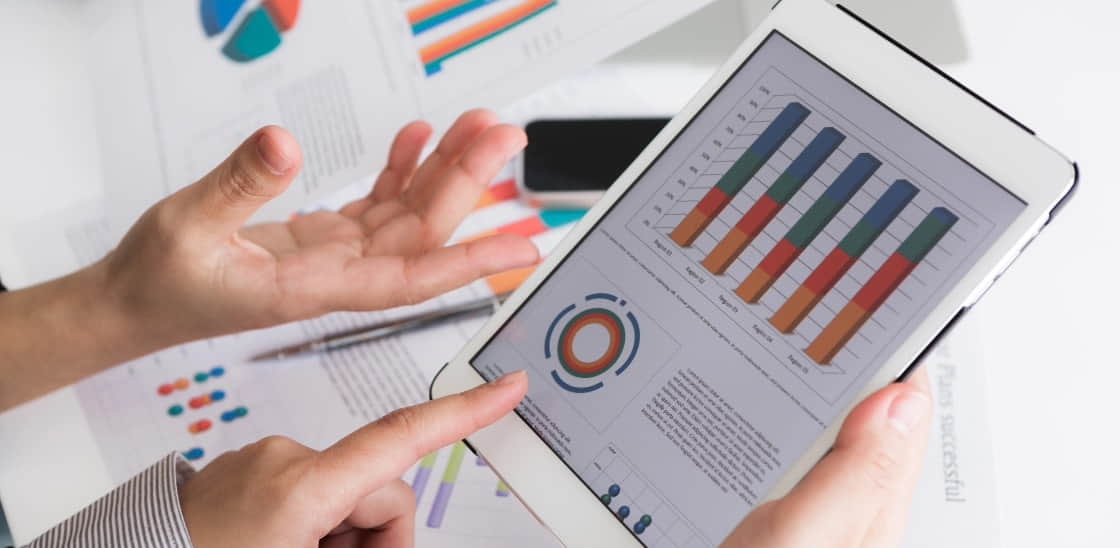Your guide to mastering survey data analysis- Part 1
Reading Time: 7 minutes

Data is potent in driving big change and transformation, but only when it is meaningful. Turning your survey data into clear, meaningful, compelling analysis isn’t always a straightforward task. But first things first, what is survey data? Survey data refers to information collected through a systematic process of asking questions to individuals or groups of people in order to gather insights, opinions, attitudes, behaviors, or characteristics on a particular topic of interest.
Surveys are a common research method used in various fields such as social sciences, market research, psychology, public health, and more. The data collected from surveys can provide valuable insights into trends, preferences, and patterns among a specific population. Because of this, survey data becomes a crucial component of any organization’s strategy.
We’ve collected our experience into survey analysis to put together some good-to-know for starters about survey data components and steps to analyze the results.
Components of survey analytics
1. Sampling
Sampling is like taking a snapshot of a vast landscape. In survey research, data is collected from a subset of the larger population, known as the sample. The art of sampling lies in selecting this subset in a way that reflects the diverse characteristics of the entire population. The choice of the sample, whether random, stratified, or convenience-based, impacts how well the findings can be generalized to the larger population. It’s a critical step in ensuring that the survey’s insights hold weight beyond the sample itself.
Weighting in survey data analysis is a critical step that follows the sampling process. Once a sample is collected, it may not perfectly represent the entire population, and some groups or segments might be underrepresented or overrepresented. Weighting is a statistical technique used to address these imbalances and ensure that the survey results accurately reflect the population being studied.
Example: Imagine you want to conduct a political survey to understand public opinion. The entire population consists of all eligible voters in a country. Instead of surveying every single voter (which would be impractical), you select a sample of 1,000 voters using random sampling. This sample should reflect the country’s diversity in terms of age, gender, geographical regions, and political affiliations, ensuring your findings can be applied to the entire voter population.
2. Questionnaire
The questionnaire is the bridge between researchers and respondents. It’s a carefully constructed tool, comprising a series of questions designed to extract specific information from those participating in the survey. These questions can take on various forms, from the structured nature of multiple-choice to the open-ended canvas of open questions. Likert scales are employed to gauge attitudes, providing a spectrum of responses. The questionnaire’s construction is an art, as the quality of questions directly impacts the quality of the data gathered.
Example: In a customer satisfaction survey for a restaurant, the questionnaire includes questions like “On a scale of 1 to 5, how satisfied are you with the food quality?” (Likert scale), “What dish did you order?” (open-ended), and “Would you recommend us to a friend?” (multiple-choice). These questions are carefully designed to gather specific feedback from diners.
3. Data collection techniques
Just as artists select the right canvas, survey researchers choose the appropriate data collection method. Surveys can be administered through face-to-face interviews, telephone conversations, online interfaces, paper-based questionnaires, or even mobile apps. The choice of method depends on a multitude of factors, including the characteristics of the target population, the nature of the questions, available resources, and the desired depth of insights. It’s here that the survey’s practical journey begins.
Example: If you’re conducting a survey about smartphone usage among teenagers, you might choose to use an online survey via a mobile app. This method is more likely to reach and engage your target audience. In contrast, a face-to-face interview might be suitable for collecting in-depth responses about healthcare experiences from a group of elderly patients.
4. Data analysis
Data analysis for survey data is a pivotal phase in the survey research process, as it transforms collected information into meaningful insights. Survey data often contain a wealth of responses from participants, and the goal of data analysis is to extract, interpret, and communicate the patterns, trends, and insights hidden within the data.
One of the key distinctions in survey data analysis is the differentiation between quantitative and qualitative data. Quantitative data involves numerical values and structured responses, making it amenable to statistical analysis. Researchers can compute averages, percentages, correlations, and perform hypothesis testing to uncover statistically significant relationships.
Example: If your survey examines the impact of a new educational program, quantitative analysis can reveal that student scores increased by an average of 15%. Qualitative analysis of open-ended comments might highlight that students particularly appreciated the interactive learning materials.
5. Reporting and presentation
Reporting and presentation are the final and critical steps in the journey of survey data analysis. These steps transform raw data and analysis into a format that can be easily understood and used by stakeholders, whether they are organizational leaders, policymakers, or the general public.
In addition to visual aids, it is vital to include context and interpretation in reports and presentations. Simply presenting numbers and graphs is insufficient; the data must be accompanied by explanations, analysis, and recommendations. Providing context helps to explain the significance of the findings and the implications for decision-making. Interpretation bridges the gap between data and actionable insights, while recommendations guide the next steps.
Example: After a survey on workplace satisfaction, you prepare a report with clear charts and graphs that show the overall satisfaction score, broken down by department. The presentation highlights the key findings, making it easy for company leaders to understand the results and take action.
Steps to analyze survey data
Analyzing survey data holds paramount importance as it provides a lens through which to understand and decipher the thoughts, behaviors, and opinions of respondents. This analytical process unveils hidden trends, underlying patterns, and shifts in attitudes, contributing to informed decision-making. The insights derived from survey data lend credibility to hypotheses, validating assumptions and enriching research.
By decoding responses, organizations can identify growth prospects, address challenges, and tailor strategies to suit evolving needs. This analytical journey also fosters personalized engagement, cultivates customer satisfaction, and offers a platform for evaluating the efficacy of interventions. Overall, survey data analysis is the gateway to insights that lead to business growth, innovation, and effective communication.
Here are some steps to undergo while analyzing survey data:
1. Data preparation and cleaning
- Organize the data: Arrange the survey responses in a structured format, with each row representing a respondent and each column representing a question or variable.
- Check for errors: Look for inconsistencies, missing values, and outliers in the data. Decide on a strategy for dealing with missing data, whether it’s imputation or exclusion.
- Code responses: Convert open-ended qualitative responses into numerical or categorical codes for analysis, if necessary.
2. Exploratory Data Analysis (EDA)
- Descriptive statistics: Calculate basic statistics such as mean, median, mode, standard deviation, and range for each variable to understand the central tendency and variability of the data.
- Frequency distributions: Create frequency tables or histograms to visualize the distribution of responses for each categorical variable.
- Cross-tabulations: Examine relationships between different categorical variables by creating cross-tabulation tables and calculating percentages or proportions within each cell.
3. Data transformation
- Recoding variables: Combine or collapse categories to simplify analysis or create new meaningful variables.
- Scaling and standardization: Normalize numerical variables to ensure comparability, especially when using different measurement scales.
4. Hypothesis testing and statistical analysis
- Formulate hypotheses: Based on your research objectives, identify hypotheses that you want to test using the survey data.
- Choose appropriate tests: Select statistical tests based on the type of variables and research questions. Common tests include t-tests, ANOVA, chi-squared tests, correlation analysis, and regression analysis.
- Conduct the analysis: Perform the chosen statistical tests and interpret the results. Determine whether the observed differences or relationships are statistically significant.
5. Segmentation and group comparisons
- Group comparisons: Compare responses across different groups (e.g., demographics, behaviors) to identify variations and patterns.
- Segmentation: Use clustering techniques to identify subgroups within the sample that share similar characteristics or attitudes.
6. Qualitative analysis (if applicable):
- Thematic analysis: For open-ended responses, identify recurring themes or patterns in the qualitative data. Group similar responses into themes and sub-themes.
- Coding: Assign codes to segments of text that represent specific concepts or ideas. Use software tools to facilitate coding and analysis.
7. Visualization
- Charts and graphs: Create visual representations such as bar charts, line graphs, scatter plots, and pie charts to illustrate key findings and relationships.
- Heatmaps and matrices: Use these visuals to display patterns in cross-tabulated data.
8. Interpretation and conclusion
- Interpret results: Analyze the outcomes of your tests and explore what they mean in the context of your research questions.
- Draw conclusions: Summarize the main findings of your analysis and discuss their implications.
9. Results and report
- Document your analysis process, including the steps taken, methods used, and key results.
- Create clear and informative charts, tables, and graphs to include in your report.
- Write an analysis section that explains the results, their significance, and their relevance to your research objectives.
Conclusion
Survey data might be an underrated tool of gaining consumer understanding, but the insights it can provide are invaluable. Survey data is a highly reliable way of knowing not only what your consumers are doing, but why they’re doing it. Survey data allows you to dig deeper than other sources allow, helping you understand far more than what’s on the surface. This enables organizations to design data-driven buyer personas and consumer journey maps that build a foundation for truly cutting-edge personalized marketing.
In the next part of this blog, we cover some best practices to collect data effectively and derive actionable insights from it.
About the author
Jayant Singh is a Senior Data Scientist at Sigmoid. He has a strong expertise in AI/ML algorithms. In his current role, he leverages the data science technology spectrum to solve complex business problems and design customized cutting-edge solutions. His innovative solutions have consistently contributed to success for CPG, Retail and Fintech companies globally.
Featured blogs
Subscribe to get latest insights
Talk to our experts
Get the best ROI with Sigmoid’s services in data engineering and AI
Featured blogs
Talk to our experts
Get the best ROI with Sigmoid’s services in data engineering and AI






